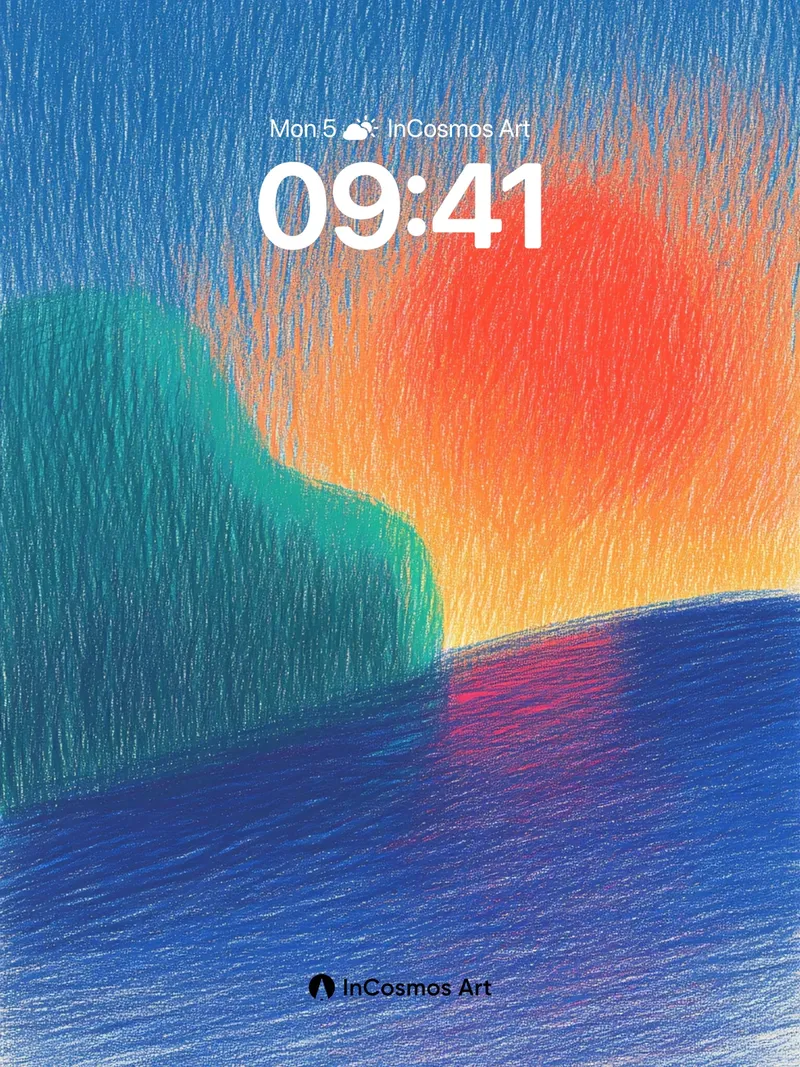In the flow of light and color, time is redefined. Each extension of line is a quiet response to states of being. Without clear outlines, emotional trajectories remain evident. These forms do not depict specific places but capture a mode of perception—when one stands on a hill facing the glow of sunset, an unspoken resonance occurs between body and world. Here, color ceases to be decoration and becomes language, conveying the entanglement of solitude, stillness, and hope.
Color as a Vessel for Memory
Where blue sky meets orange glow, memory fractures. Unspoken emotions settle at the edge of vision. The green hillside serves as a stable anchor, while water reflects inner turbulence. This non-representational approach allows viewers to project their own experiences, making each composition a mirror of private feeling.
The Threshold Between Solitude and Companionship
A lone figure stands on a slope, back turned, facing a tree with pink foliage. The composition does not narrate but invites reflection. Distance transforms into psychological space; individual presence is both small and resolute. The pink leaves symbolize fleeting beauty, while the deep blue sky suggests enduring gaze. Their tension embodies the core paradox of human existence.
Natural Laws in Abstraction
Trees appear side by side in varied hues, forming rhythm. Yellow signifies emergence, blue maturity, purple decay. They grow together on shared ground, independent yet interconnected. This is not only a metaphor for natural cycles but also a projection of social bonds—individuals maintaining difference within a common soil.
The Topography of Emotion
Mountain shapes are reduced to geometric blocks, yet internal textures shift subtly. Warm-to-cool transitions mimic emotional tides. While reason divides the world, feelings spread like waves. These images reveal the geography of inner life, reminding us that the map of the mind exceeds physical reality.


































